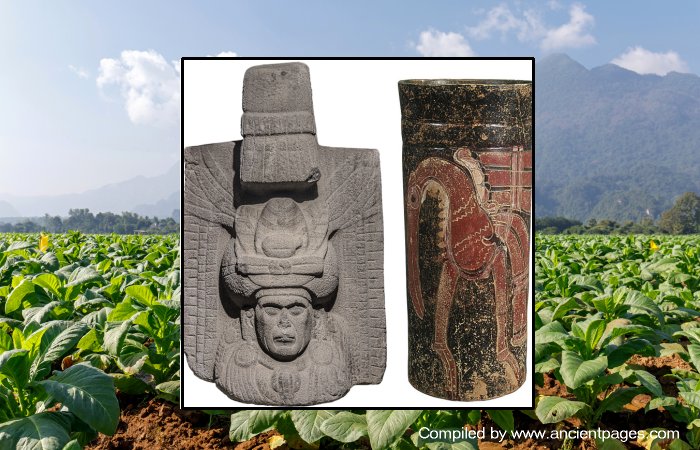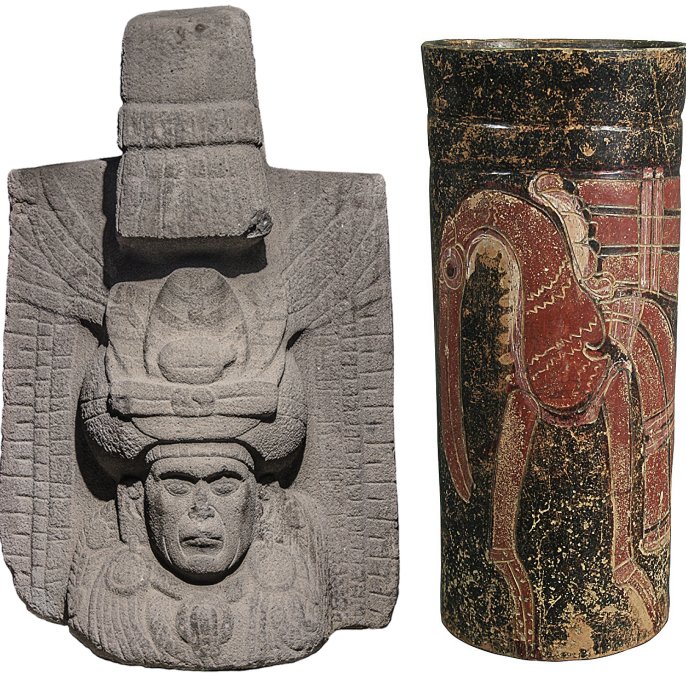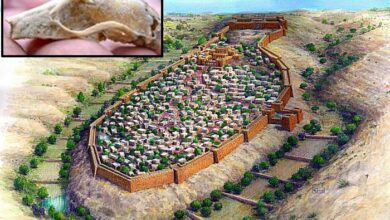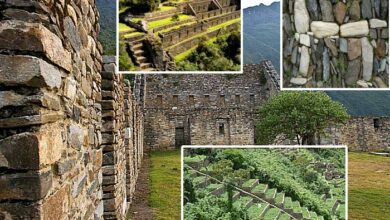Ancient Mesoamericans Drank Tobacco In Healing Rituals – Ceramic Vases From Cotzumalhuapa, Guatemala Reveal

Jan Bartek – AncientPages.com – Historical and ethnographic sources have long highlighted the importance of tobacco in Mesoamerica, but finding actual physical evidence of this plant in archaeological digs has been a rare occurrence. However, recent findings at Cotzumalhuapa, Guatemala, dating back to the Late Classic period (AD 650–950), suggest that tobacco was used ritually.
Tobacco plants. Credit: Adobe Stock – NtDanai
This conclusion comes from the detection of nicotine in residue analysis from three cylindrical ceramic vases found near the El Baúl acropolis. These vases are believed to have contained tobacco infusions or other liquid concoctions. This discovery provides new physical proof for an ancient ritual practice involving tobacco in Mesoamerica that was previously only speculated about.
During the Late Classic Period (AD 650–950), Cotzumalhuapa emerged as one of Mesoamerica’s most prominent cities. Its unique artistic style was widely disseminated across Guatemala’s Pacific coast and highlands, signifying the city’s significant political and economic influence in that region.
To delve deeper into the rituals at Cotzumalhuapa, a research team from Yale University and Lehman College of The City University of New York conducted a chemical residue analysis on seven ceramic vases found near the El Baúl acropolis.
“We knew that tobacco was a very important substance employed for a variety of ritual and therapeutic purposes in ancient Mesoamerica and across the New World,” says co-author of the research, Dr. Oswaldo Chinchilla Mazariegos from Yale University. “However, archaeological evidence is scarce because the remains of tobacco rarely preserve well.”
Left: Sculpture of a Mesoamerican ruler with what are likely tobacco leaves in its headdress. Credit: Oswaldo Chinchilla Mazariegos Right: One of the ceramic vases analyzed. Credit: Oswaldo Chinchilla Mazariegos
Scientists were optimistic that examining the residues found within these impeccably preserved containers would shed light on how plants were utilized in ceremonial practices.
The tests on the vessels did not show any traces of cacao, chili peppers, or achiote (a food dye and condiment). Interestingly, out of the seven vases examined, three surprisingly tested positive for nicotine. Given that these vessels are usually used for storing liquids, finding tobacco residue was quite an unexpected discovery.
While it was commonly understood that tobacco was either smoked in its dried leaf form or inhaled as a powder, this new finding implies that it might have been used as a liquid infusion as well.
This is significant because it provides solid archaeological proof of tobacco usage in Mesoamerica, indicating that the consumption of tobacco infusions could have been a concurrent practice with smoking or sniffing.
“The proximity of sweat baths in the same architectural group as the cache deposits containing cylindrical vases at Cotzumalhuapa suggests that the tobacco infusions deposited in these vessels may have been employed in curing and purification rituals.
The sweat bath is especially important in therapeutic and ritual procedures related to childbirth and is associated with deities related to midwifery.
Archaeological and ethnographic evidence attest to the use of sweat baths in Mexico and Guatemala for spiritual and physical purification. In the Maya highlands, steam bathing is used for many health conditions. In Oxchuc, ritual steam bathing and bloodletting are used to cure diseases, while tobacco-wound coverings protect against the entrance of “pathogenic wind,” the researcher wrote in their study.
Archaeological vessels sampled for residue analysis from El Baúl, Cotzumalhuapa, Guatemala. From left to right, top row: EB9E-G18-05, EB9D-G27-04, EB9E-H19-06, EB9D-I27-05; bottom row: EB9D-Q31-06, EB9D-E26-04-2, EB9D-F30-03 (photographs by Oswaldo Chinchilla Mazariegos).
Tobacco’s extensive usage for both ritualistic and therapeutic reasons, which were likely intertwined, is well-recorded from the early colonial period up to the present. However, recent findings suggest that this practice dates back even further than previously thought. This underscores the significance of conducting archaeological studies in regions that have not been thoroughly explored yet.
See also: More Archaeology News
Dr. Chinchilla Mazariegos pointed out that, despite its significance, the Pacific coast of Guatemala is grossly overlooked in archaeological studies. He expressed hope that these intriguing findings will spark more research and examination of archaeological samples collected from sites along the Pacific coastline.
The study was published in the journal Antiquity.
Written by Jan Bartek – AncientPages.com Staff Writer







